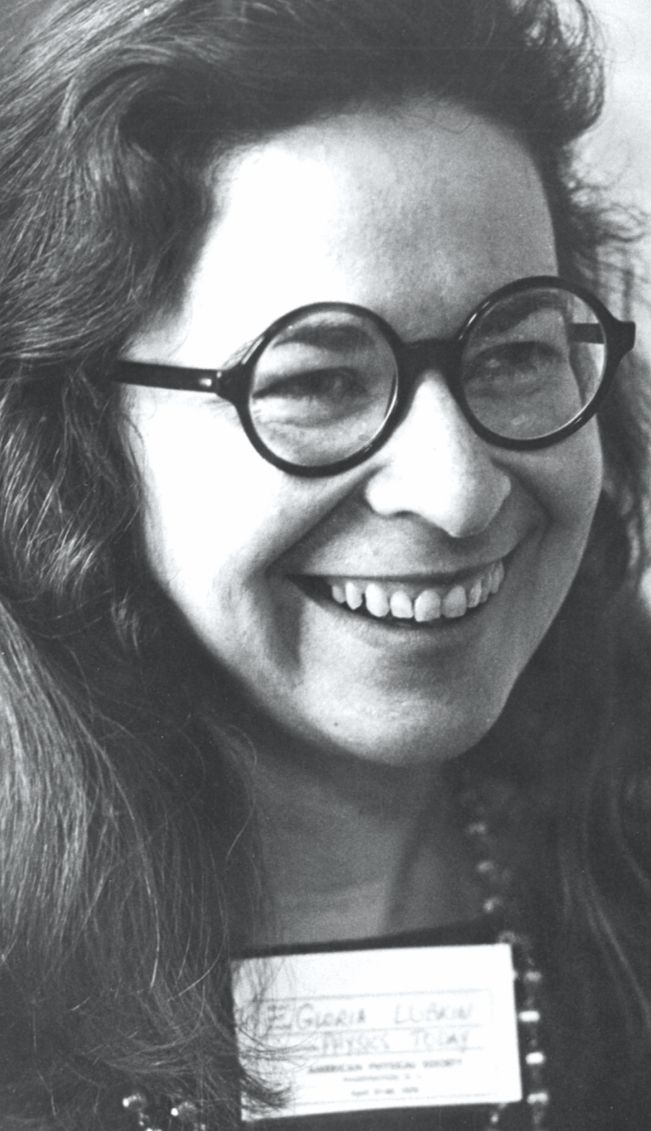Gloria Becker Lubkin
DOI: 10.1063/PT.3.4459
The physics community lost a treasured citizen when Gloria Becker Lubkin died of colon cancer on 26 January 2020 in Raleigh, North Carolina.

Gloria Becker Lubkin
COURTESY OF SHARON LUBKIN

Gloria was a journalist extraordinaire. Her network of friends and acquaintances was unparalleled: luminaries from essentially every major field of physics and a vast circle of researchers in academia, government, and industry. Her friendships were international, springing from scientific visits to the Soviet Union in 1968, Japan in 1975, and China in 1979, and numerous visits to Europe. Her understanding of physics and her skills as a writer and journalist, together with her enormous circle of friends and contacts, uniquely qualified her for her five-decade career at Physics Today and her legendary reputation as writer, editor, and editor-in-chief.
Born in Philadelphia on 16 May 1933, Gloria received her AB in physics from Temple University in 1953. She then pursued graduate work at Boston University, where she earned an MA in nuclear physics in 1957 for a thesis supervised by Fay Ajzenberg-Selove. A week after Gloria received her degree, she married Yale Jay Lubkin. To support her graduate studies, she took a series of short-term positions in industries—often nuclear related—and as an interim professor. That pattern continued after graduation but stopped abruptly when she was fired for pregnancy, as was legal at the time.
In 1963 Gloria switched careers. She enjoyed writing and had reported for her college newspaper. A great conversationalist with a natural gift for explaining physics, she phoned the editor of Physics Today (PT), Robert Davis. Their conversation ended abruptly when Davis exclaimed, “You’re hired! Come on over.”
Gloria was associate editor from 1963 to 1970. In 1964 she was fired again for pregnancy; she returned to PT part time six weeks after giving birth. In 1968 she divorced and resumed full-time work at PT. Two years later she was appointed senior editor. Her career flowered, and over the decades she helped mold the magazine. She was editor-in-chief from 1985 to 1994, editorial director from 1994 to 2000, and editor-at-large from 2001 to 2003. She was editor emerita from 2003 to 2009, when she retired.
In 1974–75 Gloria received a Nieman journalism fellowship at Harvard University, where she attended classes and formed links with journalists. When Peter Kapitza, a 1978 physics Nobelist, visited the US in the 1970s, the only journalists he agreed to talk with were Walter Sullivan of the New York Times and Gloria.
Gloria read everything published in PT, edited many of the articles herself, and wrote about 450 articles over the years. She built a staff of editors and meticulously mentored them. She transformed much of the magazine. The Search and Discovery department grew from a series of brief reports to substantive articles by a well-informed staff. Her scientific knowledge and her reputation for integrity were powerful assets in her roles both as editor and writer.
In 1986 Gloria created Reference Frame, a department of personal, thought-provoking essays by writers she selected. Her enthusiasm, scientific credibility, and charm enabled her to enlist a bravura group of authors, including Philip Anderson, David Gross, Herman Feshbach, Leo Kadanoff, James Langer, Leon Lederman, David Mermin, Helen Quinn, Vera Rubin, and Frank Wilczek. Also, both of us. (Gloria would insist on total transparency.)
Throughout her career, Gloria was seriously concerned about the problems faced by women in physics. In 1971 she coorganized a session on the situation at an American Physical Society meeting and became a founding member of the Committee on the Status of Women in Physics.
In the 1980s real estate developer William I. Fine proposed funding and establishing a world-class theoretical institute at the University of Minnesota. The physics department turned to Gloria for advice. She knew several Russian physicists who were distressed by the collapsing economy in their country. As a result, the Fine Theoretical Physics Institute (FTPI) was created with a critical number of first-rank Russian theorists forming its faculty. The FTPI is now a leader among such international institutes. Gloria cochaired its Oversight Committee from the beginning to 2014. In 1990 the FTPI honored her by establishing the Gloria Becker Lubkin Chair in Theoretical Physics.
In 2013 Gloria was appointed visiting senior research scholar at the University of Maryland department of physics. She was working on a memoir when in 2014 a health crisis halted her writing.
Frank Wilczek, Herman Feshbach Professor of Physics at MIT, spoke for many in the physics community when he commented about Gloria: “She laughed both often and infectiously. She loved physics and she loved its community. She had a story for every occasion. I’ll miss her. We all will miss her.”
More about the Authors
Daniel Kleppner. Massachusetts Institute of Technology, Cambridge.




